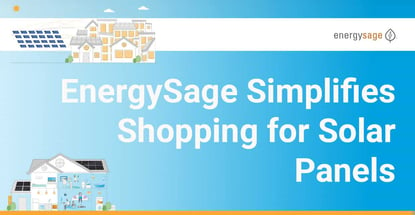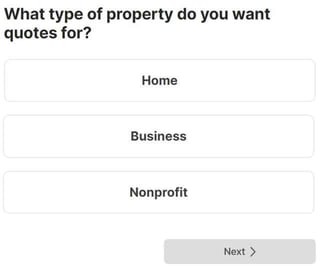
Our experts and industry insiders blog the latest news, studies and current events from inside the credit card industry. Our articles follow strict editorial guidelines.
In a Nutshell: Solar-powered homes and businesses are environmentally friendly and can yield substantially lower monthly electricity bills. EnergySage provides information and options to customers that allow them to recoup their solar investment multiple times over the life of their installation’s warranty. EnergySage also simplifies the shopping experience for prospective solar customers, including homeowners, renters, and businesses, providing expertise every step of the way.
The sun, a massive star found at the center of our solar system, is a nearly perfect sphere of plasma. It drives the earth’s climate and seasons, generates plant growth via photosynthesis, and the light and warmth it provides enables life on Earth. That’s a lot of responsibility for one star to shoulder, but the sun’s impact on our lives doesn’t end there.
Days at the beach, weddings, vistas, sporting events, and stained-glass windows are all enhanced by a little sunshine. Powering our homes and businesses can be added to this list of the sun’s ancillary benefits thanks to the growing effectiveness of solar power technology.
Unfortunately, clean home energy solutions such as solar have in the past been a cost-prohibitive solution for many otherwise-interested customers. This leads people to have to choose between helping save the planet or saving money with more traditional options.
This is no longer the case for many home and business owners. Advances in the industry have not only made solar options financially favorable, but the economic savings from installing solar panels is now the number one reason individuals and businesses make the decision to go solar.

Emily Walker is a Senior Writer specializing in consumer education with EnergySage, a company that empowers consumers and businesses to switch to affordable and reliable clean energy solutions. She explains that, “The financial implications of going solar have drastically changed over the past 10 to 20 years. At that time, people who were installing solar power were doing so because of the environmental benefits. However, as costs have fallen, the number one reason that solar is pursued today is the economic benefits it provides. If it doesn’t save you money, people aren’t going to do it.”
EnergySage is committed to helping educate people about the benefits of solar energy and determining whether it is the right choice for their home or business.
Financial Factors to Keep in Mind When Evaluating Solar
Employing solar energy as a cost-saving measure may be a new concept for some. Walker provides a practical and easily understandable methodology to assess the financial impact of making the switch to solar for household energy needs.
The standard warranty for a new solar energy system is 25 years. Walker uses that to assess cost savings as consumers have the warranty-backed peace of mind that their solar energy system will last at least that long. Walker estimates the average payback period for solar installation is 8.7 years. Actual savings are influenced by numerous factors such as the location of the solar-powered home or business and the costs of alternative traditional electricity offered in that particular area.
“Over that 25 year warranty period, the unit pays for itself multiple times,” Walker details. “In addition, though the warranty is typically a minimum of 25 years, we regularly see solar powered systems performing at an optimal or near-optimal level for 30 or even 40 years. Obviously this only increases the cost savings that the average solar customer realizes”.

In addition to the direct electric bill savings that solar customers see, there are also numerous government-backed incentives and rebates that are offered to motivate solar power installations. These local, state and federal incentives can vary by region and are available across the United States. They include the Inflation Reduction Act of 2022 that not only increased the solar tax credit back up to 30% but extended the incentive until at least the end of 2032.
Though not as easily quantifiable, there are also soft-cost savings to solar power installation. For instance, consumers with a solar-powered home may feel confident that their system will continue to provide power in the face of calamitous weather conditions. This saves them the costs of having to stock the pantry or closet with ready-made food rations in the event of a power outage. It also saves them the time spent in planning and shopping for such an event.
EnergySage Streamlines the Quote Process
Customers considering solar power for their home or business may be at a loss for where to start. Gathering and assessing quotes for a typical construction project can already be an uncomfortable task, and tackling the relatively new solar power industry may only compound anxious feelings about the pending assessment and decision.
This is where the power of EnergySage really shines. EnergySage’s in-house experts help individuals through each stage of the process to better understand the technology of solar, its costs and benefits, and how to begin shopping for a solution that best meets their needs.
“Many people who are considering getting started with solar aren’t sure where to begin or what questions to ask,” Walker explains. “We not only guide you from those initial periods of exploring solar but also provide in-depth assistance as you move to the quoting phase. We have an unbiased comparison-shopping marketplace that walks you through the process from start to finish. And, should you have any questions along the way, we’re here to help.”
Prospective customers can enter details about their property and electric bill directly on the EnergySage marketplace secure site. The site then aligns that information with vetted contractors who prepare custom quotes to allow for a comparative and informed solar shopping experience. Quotes a customer may have received prior to this may also be entered into the EnergySage system for comparison.

EnergySage vets vendors on the quality of the work they provide and the systems they install. The particulars of a customer’s solar installation project, and a contractor’s ability to meet the long-term needs of that home or business installation, are taken into consideration every step of the way.
Throughout the process, customers are saving time by having EnergySage ask the appropriate questions for them, compile the resulting information, and deliver the details to them in a succinct, actionable format. Vendors on the EnergySage site also offer discounts not otherwise available.
“EnergySage users typically can save 20% on installation costs through our site. Vendors know they’re competing with one another,” Walker says, “so they definitely lower their prices. This assures that EnergySage users receive the best deal.”
Community Solar Offers Options for Renters
Renters may be surprised to learn that they can also take part in the solar revolution. EnergySage has launched a community solar marketplace that allows users who don’t own their home, and thus are prevented from allowing the typical solar panel modifications to be performed on their roof, to shop for solar power.
Community solar, also known as solar gardens or shared solar, allows individuals and businesses to purchase solar power harvested from nearby solar farms. It’s an option that may also interest people whose roofs are not conducive to solar panel installation, or whose property is overly shaded. Community solar can also be an option for low- to moderate-income homeowners or those who wish to avoid solar installation for aesthetic reasons.
“Community solar participation functions very similarly to our rooftop model,” Walker says. “Individuals enter their location and information on our site and comparison shopping options are presented. It’s a very simple process. We’ve found that customers can evaluate their choices on our site and subscribe to their preferred service in under an hour.”
Customers who take advantage of community solar can expect to see cost savings of 5-20% on their monthly electricity bill, depending on their choice of provider and location. Community solar is available in 13 states and is expected to expand nationwide.
With only one inhabitable planet in our solar system, each individual has a responsibility to make decisions to take care of it as best they can. Solar-powered energy systems offer options that can be more affordable than their traditional counterparts.
“Even if you don’t have time today to enter your information on our site, feel free to stop by online and drop us a message or give us a call,” Walker advises. “We believe in solar energy and making solar information as easy to access and understand as possible.”



![8 Best Credit Cards for Online Shopping ([updated_month_year]) 8 Best Credit Cards for Online Shopping ([updated_month_year])](https://www.cardrates.com/images/uploads/2018/03/online.png?width=158&height=120&fit=crop)
![5 Facts About the Shopping Cart Trick for Credit Cards ([updated_month_year]) 5 Facts About the Shopping Cart Trick for Credit Cards ([updated_month_year])](https://www.cardrates.com/images/uploads/2018/07/carttrick.png?width=158&height=120&fit=crop)
![7 Best Credit Cards for Shopping ([updated_month_year]) 7 Best Credit Cards for Shopping ([updated_month_year])](https://www.cardrates.com/images/uploads/2019/09/Best-Credit-Cards-for-Shopping-Feat.jpg?width=158&height=120&fit=crop)
![9 Best Credit Cards for Walmart Shopping ([updated_month_year]) 9 Best Credit Cards for Walmart Shopping ([updated_month_year])](https://www.cardrates.com/images/uploads/2019/12/Best-Credit-Cards-for-Walmart-Shopping.jpg?width=158&height=120&fit=crop)
![8 Best Credit Cards For Christmas Shopping ([current_year]) 8 Best Credit Cards For Christmas Shopping ([current_year])](https://www.cardrates.com/images/uploads/2021/11/Best-Credit-Cards-For-Christmas-Shopping.jpg?width=158&height=120&fit=crop)

![6 Ways to Save on Credit Card Interest Fees ([updated_month_year]) 6 Ways to Save on Credit Card Interest Fees ([updated_month_year])](https://www.cardrates.com/images/uploads/2021/11/Ways-to-Save-on-Credit-Card-Interest-Fees.jpg?width=158&height=120&fit=crop)